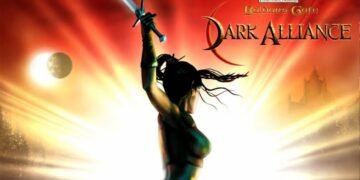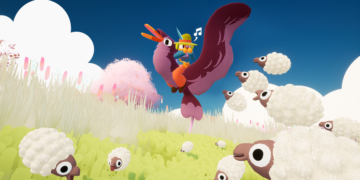Ghost of Tsushima, the new open-world adventure from Infamous developer Sucker Punch Productions, has a wonderful asset in the island setting that gives the game its name. This fictionalized version of Tsushima is a vast, beautiful place thankfully not limited by strict adherence to historical or geographical accuracy, but instead tinged with myth and magic.
Unfortunately, the gameplay that takes up your time on Tsushima is overly safe and familiar, resulting in a game that’s packed with lovely spots to discover and offers moments of peaceful reflection, yet still struggles to differentiate itself from numerous other open-world adventures.
A bold homage
Ghost of Tsushima begins as an era of stability and prosperity for the samurai ends. The game is set in 1274, the year of the first Mongol invasion of Japan. The intelligent and brutal Mongol chieftain Khotun Khan, a fictional figure positioned here as the grandson of Genghis Khan, aims to use the island of Tsushima as a strategic foothold from which to conquer the Japanese mainland. Though wildly outnumbered, the samurai of Tsushima gather for an all-out assault on the Khan’s forces, and most of them meet their deaths.
However, one young samurai, Jin Sakai, is rescued and nursed back to health by a peasant thief named Yuna.
Desperate to save his people, Jin becomes caught between the ideals of honor his uncle has spent a lifetime teaching him, which dictate that a samurai always face his enemies openly and fairly, and the lessons Yuna teaches him, that such honor is a luxury not all can afford, and that to face the Mongol forces head-on can mean only defeat and death. Both lessons are correct, just as both lessons are wrong.
Though we see young Jin being taught that a samurai must control his emotions, he is thankfully no stoic hero. He remains open enough about his feelings that we understand how difficult the path that he follows throughout the game becomes for him. He’s assailed both from within, due to his belief that a samurai must conduct himself honorably at all times, and from without, due to the people he loves who still cling to those old ideas expressing their disappointment in his actions.
Jin’s first stealth kill is almost traumatic for him, and it’s clear that it will be hard for him to live with the dishonor of killing from the shadows. I was performing stealth kills left and right soon enough, however, since games rarely let the feelings of regret shown in cutscenes slow down the violence of the action itself.
Still, we understand the personal sacrifice he is making to break with the traditions he has known his whole life as he assumes the identity of the Ghost, a vengeful warrior who resorts to these “dishonorable” measures — stabbing foes in the back, poisoning their drinks, whatever it takes — to protect and liberate his people. He’s doing his best in the fiction of the game, but the only way for him to be effective is to operate in ways that go against every ounce of his training.
Such morally ambiguous heroes are commonplace, of course, but the particular weight of honor and tradition Jin bears allows Ghost of Tsushima to navigate this well-trodden territory in a way that feels distinctive and appropriate to the game’s setting.
Jin does what he feels he must to protect Japan from its would-be conquerors, and for it, he ultimately pays a heavy personal price. Ghost of Tsushima’s tale isn’t one of unambiguous victory or triumph. The samurai films of director Akira Kurosawa, after all, which Ghost of Tsushima expressly pays homage to, may be a lot of things — funny, thrilling, and often tragic — but they were never comforting stories with upbeat endings.
Right off the bat, in fact, Ghost of Tsushima asks if you’d like to play in what it calls Kurosawa Mode, a black-and-white filter “inspired by the movies of legendary filmmaker Akira Kurosawa,” making it clear from the get-go that its vision of feudal Japan owes at least as much to cinema as it does to history. It’s a bold claim, but the attention to detail in Ghost of Tsushima, particularly in its world and costumes, is meticulous enough that the game earns the right to name-drop the master. Well, with one small but significant exception.

Image: Sucker Punch Productions/Sony Interactive Entertainment
Kurosawa Mode automatically turns on the game’s Japanese dialogue option, with English subtitles. However, with all the dramatic close-ups the cutscenes indulge in, it’s impossible to ignore that the characters’ lips are synced to English dialogue, not Japanese dialogue.
I wish the developers had taken that extra step and modeled the characters against the Japanese voice-over. Let people who opt for the English dialogue deal with the lip movements being out of sync; after all, it would only contribute to the feeling that you’re watching a Japanese film dubbed into English. The way it’s handled now is a strange choice considering how hard Sucker Punch worked to create a sense of authenticity in most other areas of the game.
As much of a sucker as I am for a good film-grain effect, though, I didn’t want to miss out on the bold colors of Tsushima. I did keep the Japanese dialogue option, however, especially since the actors give their lines the sort of heightened dramatic energy you’d expect from a tale of honor, betrayal, and bloodshed such as this.
An assassin in samurai garb
Jin travels across the island of Tsushima, hoping to save it by gathering what few allies remain to aid him in his battles against a formidable enemy.
Sucker Punch convincingly sells the idea of a small force going up against overwhelming odds. Before many battles, Jin and his allies will scout the enemy defenses, determining how best to use what little military strength they have to exploit any of their opponent’s weaknesses.
I appreciated that Ghost of Tsushima took the time to make me feel attached to its characters, so that the stakes of what Jin and his allies are fighting for mean something. I enjoyed the honest, revealing conversation over bottles of sake between two comrades-in-arms the night before an overwhelming siege they knew they might not survive — almost as much as I enjoyed the battle itself.
In fact, it’s the moments between characters that I’ll remember most about my time with Ghost of Tsushima. There are strings of side quests that give you the opportunity to spend time with your closest allies, and though the combat scenarios that pepper these quests are unremarkable, the conversations between characters as you walk or ride from one spot to the next make them worthwhile.

I valued these quests not for the chance to fight yet another predictable battle, but for the insight they offered into these people’s lives and their philosophies. Particularly memorable are a few quests you can do with Yuriko, Jin’s childhood caretaker, now an elderly woman he has enlisted for her knowledge of poisonous flowers. Her quests offer an opportunity for reflection on memory, decline, and impermanence, and they tie in beautifully with the natural splendor of the island itself.
With its quasi-historical setting and its open world filled with activities and upgrades, comparisons to the Assassin’s Creed games are inevitable, so let’s not beat around the bush: Ghost of Tsushima is extremely reminiscent of many entries in the Ubisoft action franchise and other, similar open-world games, both in terms of its combat and its structure. If you like maps with a lot of icons on them offering up things to do, you’re going to be very happy with this game.
This is a world that, for better or worse — worse, if you ask me — lays itself out for you like a buffet crying out to be consumed. Everywhere you go, you’re liable to hear the telltale chirp of a golden bird, eager to lead you to yet another of the game’s hundreds of points of interest, where another collectible or another opportunity for incremental progress toward some upgrade awaits.
Look, I’m a simple woman. If a golden bird wants to lead me somewhere, I want to follow. If there’s a question mark on my map, I want to find out what it is. But with those aforementioned birds, who chirp at you all the time — with its genuinely overwhelming number of artifacts, written records, crickets, banners, saddles, sword kits, headbands, masks, charms, and other items to collect — Ghost of Tsushima is overeager, desperate even, to constantly make me feel rewarded or to show me that I’m making meaningful progress. This eats away at my ability to see the world of the game as a world rather than as a collection of things to do and grab and earn.
Among the points of interest the golden birds want to guide you to are hot springs that offer permanent health increases; shinto shrines that provide very Assassin’s Creed-style environmental platforming challenges you can complete in exchange for charms that confer passive bonuses; and spots where you compose haiku by selecting lines of poetry via multiple choice to earn cosmetic rewards.
It’s all thematically cohesive, and the haiku spots are interesting for the way they pull your focus entirely onto a lovely environmental scene as Jin contemplates death or loss or another aspect of the human condition. However, as sometimes happens with games of this type, you encounter the same experiences and challenges so routinely that they start to feel like cookie-cutter bits of consumable content rather than opportunities organically nestled in the environment you’re exploring. The illusion might have been a little stronger if there were just fewer of each activity, making each one more meaningful.

Image: Sucker Punch Productions/Sony Interactive Entertainment
It’s a shame that Ghost of Tsushima doesn’t put more trust in its setting, because the real reward for exploring Tsushima could have just been taking in all of its picturesque beauty: a tranquil pond overseen by a statue of the Buddha; a dueling circle in which leaves gently fall, red as blood; a grassy field, its gentleness offset by a single, arrow-riddled corpse.
This beauty remains remarkable, but it loses something when the game is always finding ways to say, “Psst! Over here! More progress toward unlocking your next charm slot awaits,” instead of giving you the time and space to stop for a moment and enjoy your surroundings for their own sake. Sucker Punch seems to constantly be trying to lead you away from what the game does well and toward what other media has done well, from the open-world design to the look of the game itself.
Fighting like ghosts to continue living like samurai
Ghost of Tsushima’s combat, too, while full-featured in terms of the assortment of stealthy and more overt combat options on offer, is overly familiar. You’ll sneak up on many perfectly positioned enemies to perform stealth kills, then slink back into tall grass that shields you from the gaze of other enemies.
You’ll free bears from cages so that they can wreak havoc on their captors and make your work a little easier. You might toss smoke bombs to disappear from sight, or throw a wind chime to distract a nearby enemy. It’s not that these elements are bad, of course. They’re all handled well here, offering the same familiar satisfactions I’ve felt in other, similar games in the past, as I’ve leapt from a rooftop to assassinate an enemy from above or fired an arrow at some explosive barrels. It’s not bad — it’s just rote.
Games aren’t designed in a vacuum; they should be in conversation with each other and seek to build on what came before. The problem is that Ghost of Tsushima isn’t interested in doing much building. There’s a superficial samurai aesthetic here, and a very good one, but in terms of the rhythms of battle and the feel and function of the tools at your disposal, the combat, with a few cosmetic changes, could have been taken from so many other games, or put into so many other games, that I could never find the particular soul of this game.
Ghost of Tsushima does at least require you to rely on different techniques at different times so that you can’t get overly comfortable with a single approach. A covert rescue mission where you sneak into a castle claimed by the Mongols demands stealth, for instance, while a few large-scale cinematic battles see you openly confronting enemy forces with your most trusted allies at your side, hacking and slashing to get through as many soldiers as possible. Jin never really has to choose between his chosen method of combat and the art of “dishonorable” guerrilla war, but must indulge in both styles at different times, using different tactics.

The game’s flair for the dramatic also surfaces in the standoff, an option that’s available to you when you first approach a group of enemies. It’s essentially the equivalent of an Old West gunslinger duel, but with samurai swords. If you opt for it, Jin will call out to his foes, challenging them openly and alerting them to his presence.
One enemy will step forward to face Jin. If you release a button at the precise moment the enemy strikes, you’ll fell him with a single slash; if your timing is off, you’ll be gravely wounded. Of course, calling out for a direct confrontation with your opponent may be honorable, but it also alerts him and all of his nearby allies to your presence. These are tense, enjoyable moments of death, violence, and honor.
The ghost stance is unlocked at a certain point of the game as well, acting as a mechanical reflection of the legend of the Ghost spreading and striking fear into the hearts of Jin’s enemies. After pulling off certain feats — most commonly by killing several enemies in a row without taking damage — you can activate the ghost stance and send nearby foes into a panic that lets you easily mow a few of them down. It’s a fine reward for skillful play, elevated by its intensely dramatic presentation as the screen fills with red.
Boss battles are pure, one-on-one duels that strip away all your tools and require you to rely only on observation and precise timing. You have to understand your enemy’s attack patterns so you can know when to dodge, when to parry, and when to strike. While most encounters made me feel quite overpowered as I threw kunai and sticky bombs at enemies and fired explosive arrows that gave me an edge even over larger groups, my heart was often racing due to the level of focus demanded by these face-offs with Jin’s most dangerous adversaries.
Moments of reflection
Though I’ve completed the main story in Ghost of Tsushima, done numerous side quests, liberated some Mongol-occupied strongholds, collected tons of cosmetic gear, and done several of every type of activity the game offers, there are still vast swaths of my map that remain shrouded. Do I really want to repeat each kind of mission or challenge over and over, until I’ve seen it all?
Probably — not because I care to acquire yet another charm that gives me a passive bonus or any other little tchotchke, but because when you strip all that stuff away, the world underneath it is beautiful in its own right, and I want to see what picturesque spots remain waiting to be discovered. I’m playing through the busy work the game presents me for a reward that should have been given much more freely: the ability to just exist in, and enjoy looking at, this gorgeous world.

I also love the way Jin looks in his loose-fitting traveler’s attire as he moves across the landscape, his tattered cape blowing in the wind just so, as if he, too, is simply another part of the flow of life and death on the isle.
But as much as I enjoy this game’s style, it’s not quite enough. The best open-world adventures of recent years do something that sets their gameplay apart so they can rise above the crowd and hopefully mature the genre. Sucker Punch never found anything in the gameplay itself that would allow Ghost of Tsushima to similarly stand apart, and that’s its largest failing. It feels like a game that’s destined to go on sale, and then perhaps be seen as a slight cult classic as more and more people discover that its derivative play is hiding some serious charm in its visual design and some impressive environmental work.
Ghost of Tsushima has a distinctive aesthetic, after all, but it’s only skin-deep. The core game underneath that alluring exterior is a pastiche of open-world game design standards from five years ago; it lacks a real personality of its own. Ghost of Tsushima offers a lovely world to explore, and there’s value in that, but it should have been so much more than a checklist of activities to accomplish.
Ghost of Tsushima will be released July 17 on PlayStation 4. The game was reviewed using a download code provided by Sony. Vox Media has affiliate partnerships. These do not influence editorial content, though Vox Media may earn commissions for products purchased via affiliate links. You can find additional information about Polygon’s ethics policy here.

















































